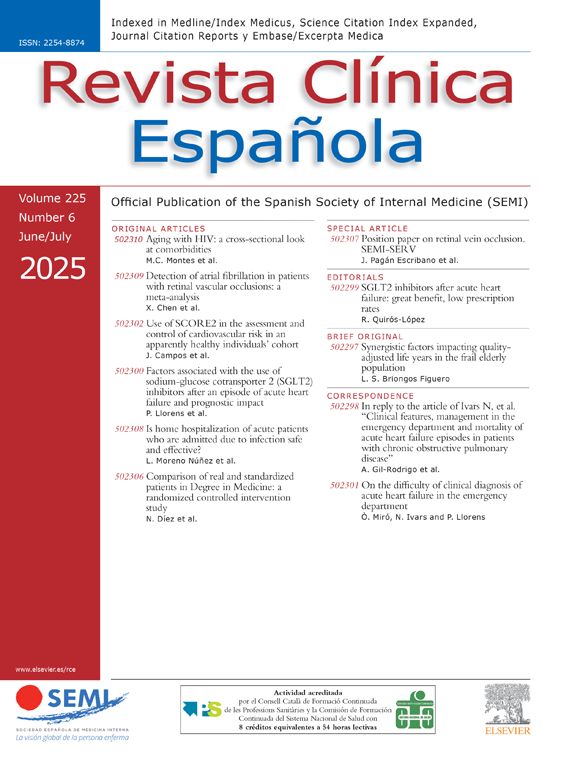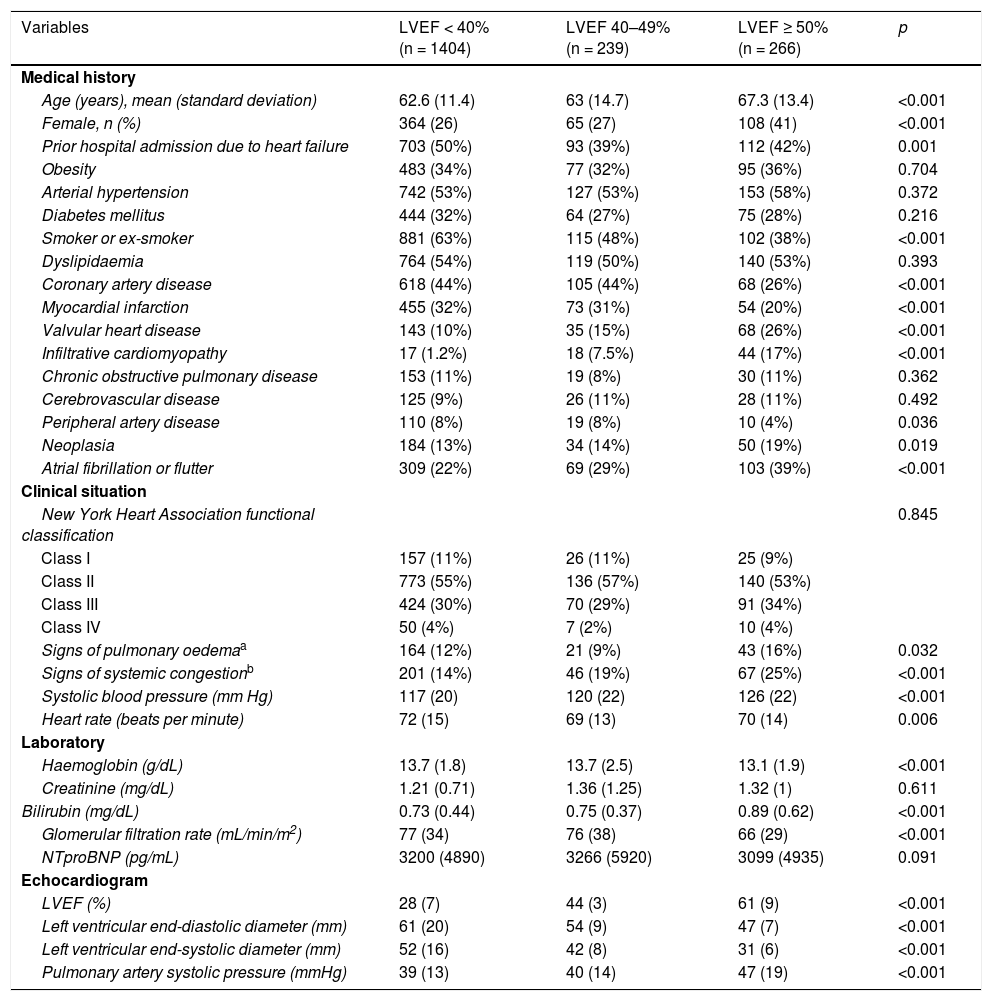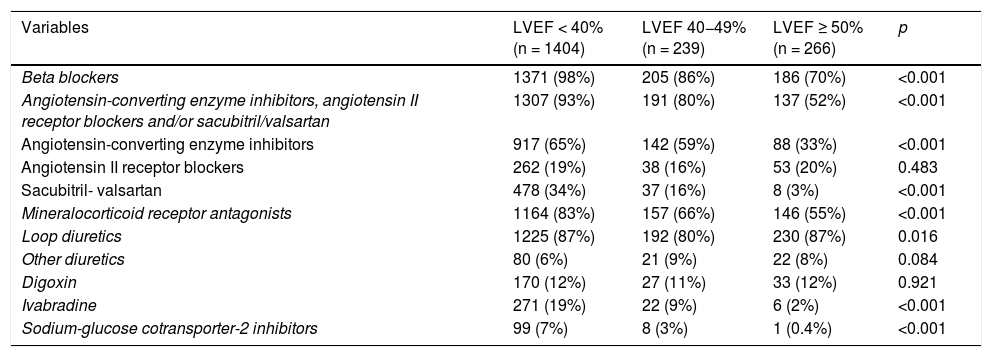Patients with heart failure are classified into three phenotypes based on left ventricular ejection fraction. This work aimed to compare the clinical profile, treatment, prognosis, and causes of death of patients with heart failure and reduced (<40%, HF-rEF), preserved (≥50%, HF-pEF), or mid-range (40–49%, HF-mrEF) left ventricular ejection fraction.
MethodsAn analysis was conducted on the clinical data included in a prospective registry of patients with heart failure who were referred to a specific Cardiology unit from 2010 to 2019.
ResultsA total of 1404 patients with HF-rEF, 239 patients with HF-mrEF, and 266 patients with HF-pEF were analyzed. Significant differences were observed among the groups in regard to several clinical characteristics and the frequency of prescription of neurohormonal blocking drugs. A multivariate Cox regression revealed an increased risk of all-cause mortality in patients with HF-pEF (hazard ratio 1.36; 95% confidence interval 1.03–1.80; p = 0.028) and patients with HF-mrEF (hazard ratio 1.36; 95% confidence interval 1.03–1.78; p = 0.029) as compared to patients with HF-rEF. Heart failure was the most frequent cause of death in the three subgroups. A higher relative weight of sudden death as a cause of death was observed among patients with HF-rEF while the relative weight of non-cardiovascular causes of death was higher among patients with HF-pEF and HF-mrEF.
ConclusionsThis study confirms the existence of significant differences among patients with HF-rEF, HF-mrEF, and HF-pEF with regard to their clinical profile, therapeutic management, prognosis, and causes of death.
Los pacientes con insuficiencia cardíaca se caracterizan en 3 fenotipos en función de su fracción de eyección ventricular izquierda. El propósito de este estudio fue comparar el perfil clínico, el tratamiento, el pronóstico y las causas de muerte de los pacientes con insuficiencia cardíaca y fracción de eyección ventricular izquierda reducida (<40%, IC-FEr), preservada (≥50%, IC-FEp) o en rango medio (40–49%, IC-FErm).
MetodologíaAnálisis de la información clínica recogida en un registro prospectivo de pacientes con insuficiencia cardíaca remitidos a una consulta monográfica de Cardiología entre 2010 y 2019.
ResultadosSe estudiaron 1.404 pacientes con IC-FEr, 239 pacientes con IC-FErm y 266 pacientes con IC-FEp. Se observaron diferencias significativas entre los 3 grupos en relación con diversas características clínicas, y en cuanto a la tasa de prescripción de fármacos moduladores de la respuesta neurohormonal. La regresión de Cox multivariante reveló un incremento del riesgo de muerte por cualquier causa en los pacientes con IC-FEp (hazard-ratio 1,36; intervalo de confianza al 95% 1,03–1,80; p = 0,028) e IC-FErm (hazard-ratio 1,36; intervalo de confianza al 95% 1,03–1,78; p = 0,029) en comparación con los pacientes con IC-FEr. La insuficiencia cardíaca fue la causa más frecuente de muerte en los 3 grupos; se observó un mayor peso relativo de la muerte súbita en los pacientes con IC-FEr, mientras que las causas no cardiovasculares de muerte tuvieron un peso relativo mayor en los pacientes con IC-FEp e IC-FErm.
ConclusionesEl estudio confirma la existencia de diferencias significativas en el perfil clínico, manejo terapéutico, pronóstico y causas de muerte de los pacientes con IC-FEr, IC-FErm e IC-FEp.
Article
Diríjase desde aquí a la web de la >>>FESEMI<<< e inicie sesión mediante el formulario que se encuentra en la barra superior, pulsando sobre el candado.
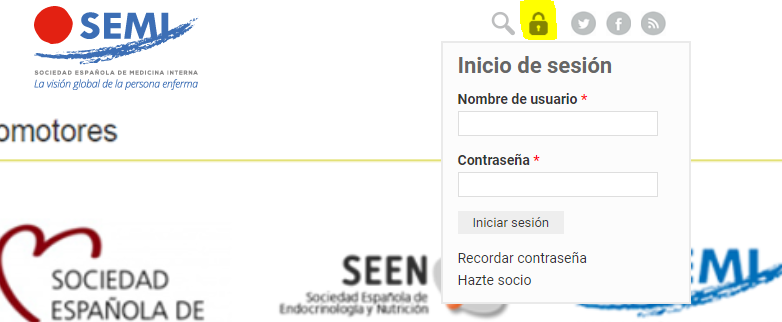
Una vez autentificado, en la misma web de FESEMI, en el menú superior, elija la opción deseada.
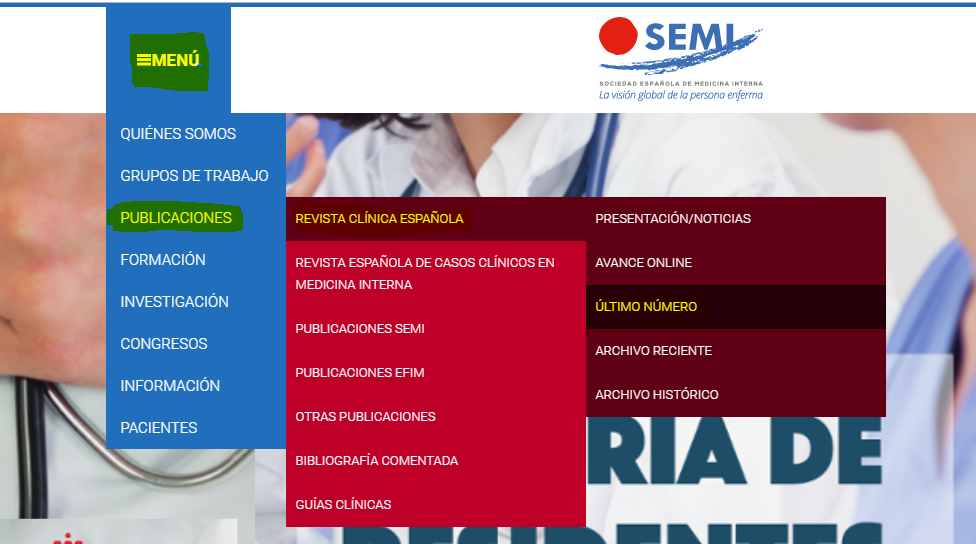
>>>FESEMI<<<

